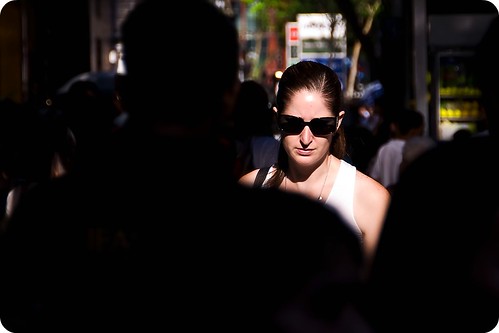Digital cameras are stuffed full of features all ostensibly aimed at empowering the photographer — WiFi, GPS, in-camera raw processing…the list continues to grow. But for some people, the sheer number of menu options available is overwhelming, leading some of those overwhelmed shooters to simply leave certain features at their default setting…which isn’t always a bad thing. The problem is, depending on what settings you’re overlooking, you could be keeping yourself from getting the best shots possible.
I find that one setting many newer shooters often overlook (or ignore for lack of understanding) is metering mode. It’s not as difficult to use as some might think and you may find that adjusting it makes a meaningful — if subtle — difference in your images.
What is Metering?
Metering is, in the most basic of terms, how a camera measures the brightness of a subject/scene; the camera will “look” at available light and quickly do a bunch of calculations to determine a correct exposure. Given the sophistication and complexity of current cameras, those calculations are typically reliable, meaning exposures are usually correct. Cameras do get things wrong, however — or, at least, they don’t always give you what you want in the way of exposure, especially when using one of the auto/program or semi-auto shooting modes.
It’s one thing to make adjustments to exposure by using exposure compensation or by changing aperture, ISO, or shutter speed; but you can also take control of how your camera determines exposure in the first place.
DIY Manfrotto tripod box gray card by Claudio Matsuoka, on Flickr
Metering Modes
Evaluative Metering – Evaluative metering is also referred to as multi-segment metering, matrix metering, or honeycomb metering, depending on your camera manufacturer. This is usually the default mode for most cameras. Evaluative metering determines correct exposure by assessing readings taken simultaneously from multiple parts of a scene. Because it takes into account different parts within the frame, evaluative metering is a good general purpose mode and will give you accurate exposures in a wide variety of shooting situations. Use this mode when you’re in a hurry or when there is a lot of contrast in a scene and you’re unsure of which mode will work best.
Center-Weighted Metering – While evaluative metering can certainly get the job done, you may eventually find that you’re not getting quite the results you want. Instead of assessing a whole scene, center-weighted (or center-weighted average) metering pays special attention to the middle 60-80% of the frame; corners are of little importance here (though some systems do include a bit of information from the corners). This mode is much more predictable than evaluative metering and is a good choice for photographing brightly lit subjects that need to be exposed correctly in relation to their surroundings (you don’t want the subject to be affected by the background exposure).
Since center-weighted metering only cares about the light in the middle of the frame, it will not attempt to correct for backlighting, which evaluative metering will do. You will sometimes need to apply exposure compensation on your own.
Spot Metering – Similar to center-weighted metering, spot metering measures just the center of the frame but uses a considerably smaller area (2-3% of the whole frame) and disregards everything outside of that spot. Logically, this mode is particularly useful when you’re shooting high contrast scenes in which one of the other metering modes might cause your subject to under- or overexposed. Shooting the moon, for example, would be a good time to use spot metering since it is a bright subject against a dark background; you want to expose for that one small, bright area. Evaluative metering would lead to a severely overexposed moon.
There really is no one metering mode that works in every situation. While you will probably do just fine in most instances using center-weighted or evaluative metering, you need to be able to recognize when spot metering will be preferable. Metering can be an elusive concept to comprehend, let alone master; it takes time and practice (experimentation). Don’t obsess over it or let it interfere with the most important rule of photography: get the shot!








2 Comments
Thank you for this!!! I have been trying to understand it, and your image illustrations have turned on a light bulb!
As always, excellent, understandable, plain English explanation.